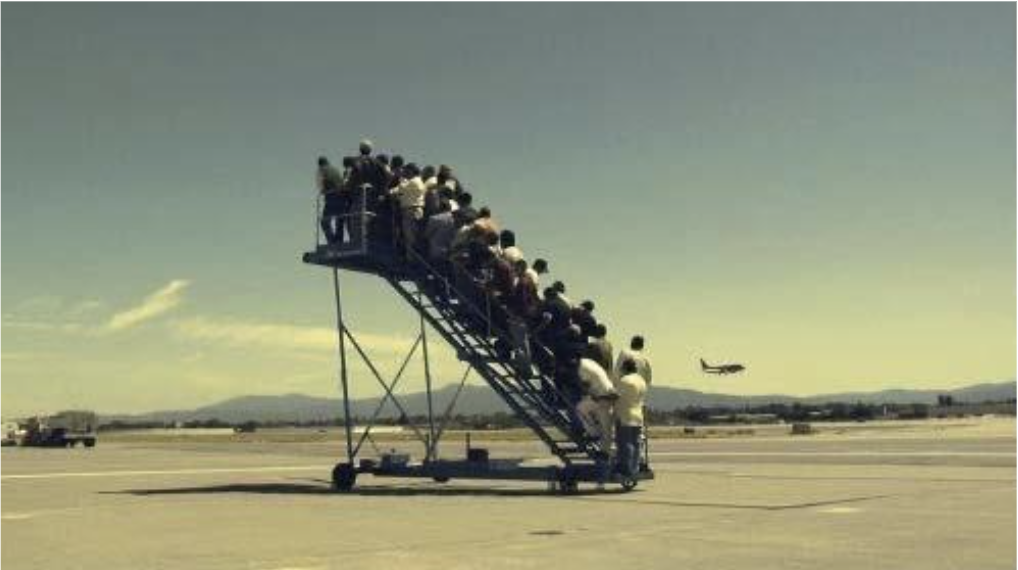Valarie James, American, born 1953
Las Madres, 2005
As a result of increasingly perilous conditions at the U.S.-Mexico border, undocumented migrants must travel with a host of survival materials, many of which are discarded or lost along the way. Non Immigrant residents of these borderlands, including artist Valarie James from Arivaca, Arizona, often participate in desert cleanups, during which they encounter both decaying objects and, frequently, the bodies of migrants who did not survive their journeys. James collects and repurposes many of these items into artworks which pay homage to the migrant stories interwoven with the objects. The Las Madres sculptures, three female figures made of found pieces of khaki, burlap and denim respectively, are intended to commemorate the immigrant lives lost to the desert as well as the mothers who are left behind. The sculptures will deteriorate over time, just as the bodies of deceased migrants do when exposed to the elements of the borderland desert. Label by Sarah Roberts




